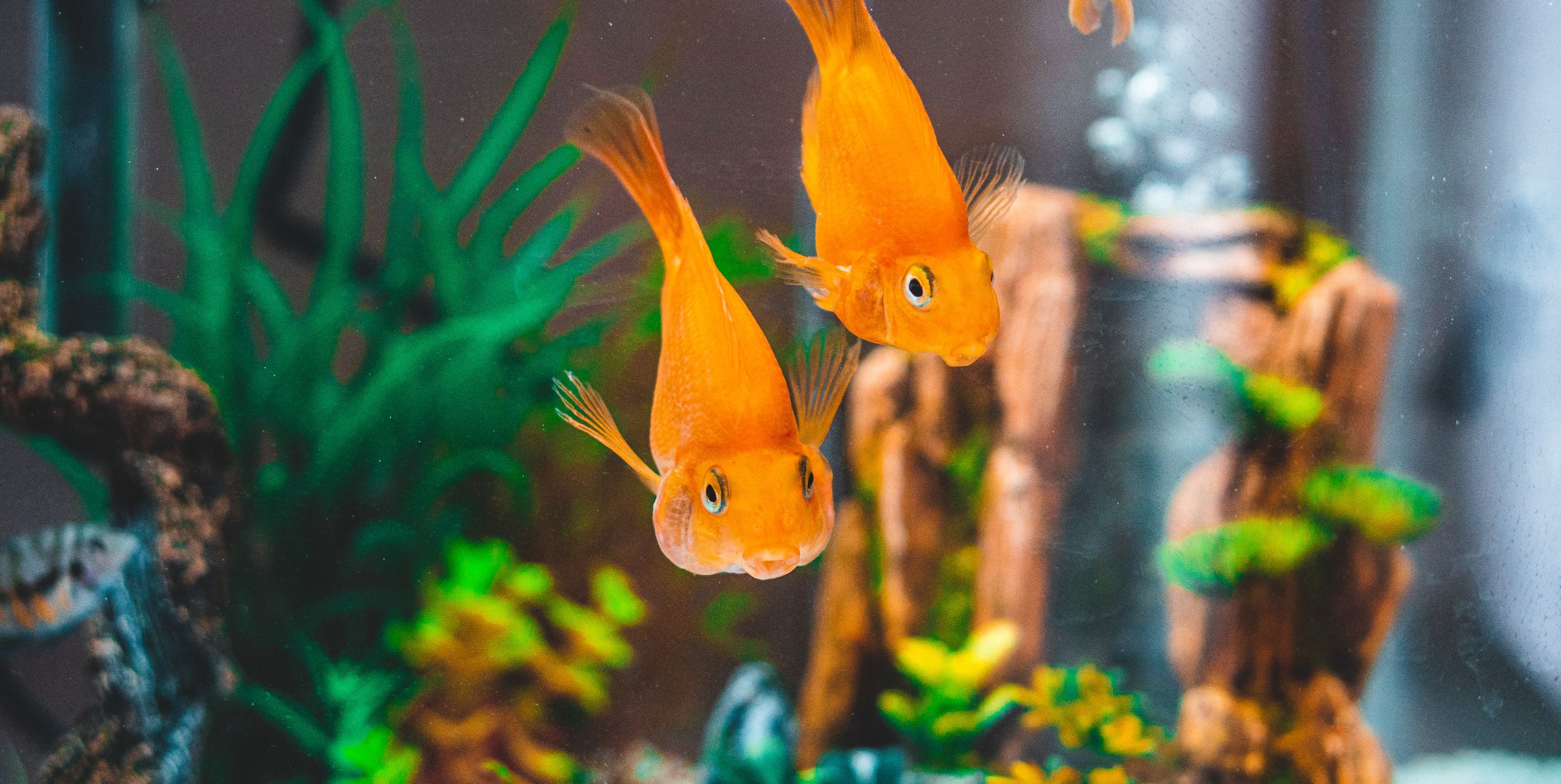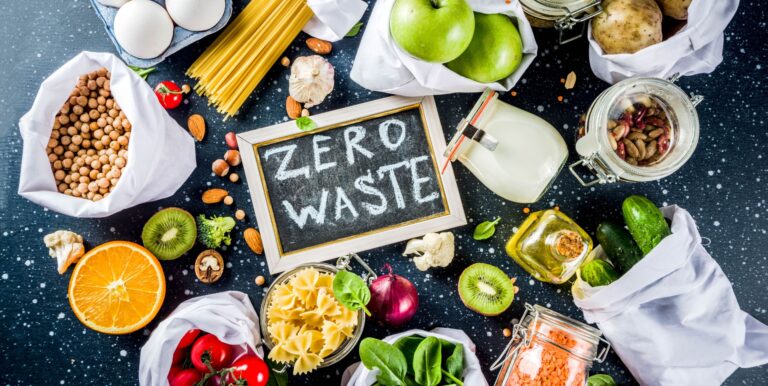The Eco-Friendly Fish Tank Guide

Can you keep pet fish and not have a major impact on the environment? Whether it’s the goldfish you win at the school fair or a tank purchased and set up from an aquarium store–or something in between–there are a few considerations to making your tank as environmentally friendly as possible. These tips will not only help lessen your tank’s impact on the planet but will save you a little money, too.
The topic can be broken into a few main points: the fish, the tank, and the maintenance. Let’s wade in (I couldn’t help myself), shall we?
Can pet fish be eco-friendly?
Walk into any pet store and you’ll be met with a wall of tanks filled with all sorts of fish. From fish genetically modified to glow to the schools of tiny community fish, you can find it all at a pet shop. So, how do you know which fish to get if you’re looking to create an eco-friendly fish tank?
First, it’s important to understand where your fish come from:
Aquarium keeping can also have hidden environmental costs upstream. In some parts of Southeast Asia, where the vast majority of the world’s saltwater “ornamental” organisms come from, fish are caught using squirt bottles filled with cyanide, which stuns the animals and makes them easier to extract from coral reefs. But the chemical can also damage the corals, as well as other organisms living in the reefs—not to mention weakening the fish so that fewer of them survive transport. (Keeping fish healthy isn’t just an animal-rights issue, after all, it’s also an ecological concern. The fewer animals that survive the process, the more intensive the harvesting has to be.) When buying wild-caught fish, look for those that have been captured with hand nets rather than chemicals.
….
Sustainable collection is less of an issue with freshwater aquarium species, since 90 percent of them are farm-raised.
Source: Slate.com
Gah.
OK, so we just drew the first line in the sand, so to speak. Err on the side of freshwater aquarium species, not saltwater. (There’s another good reason for this distinction, too, when it comes to the tank, but more on that in a minute.)
When we decided to add a fish to our family, it was because of the specific tank, which I’ll get into in a minute, and the purchase came with a coupon for a free Betta from Petco. So, that’s what I got. In the wild, bettas live in shallow rice paddies in Thailand, Vietnam, Cambodia, and Laos. They’re not the colorful fish you see in plastic tubs in pet stores. Those have been bred to look that way.
A quick aside about bettas: They shouldn’t live in a vase or a cup or a beer stein on your kitchen counter. They need more space than that, and they deserve oxygenated water. Even though they’re often sold like that, don’t do it. Read more about betta care.
So, you’ve picked out your farmed freshwater fish. Now what? Well, he or she needs a tank! Let’s look next at how to minimize the impact of your fish tank.
Can fish tanks be sustainable?
I remember as a teen babysitting for this family that had a built-in aquarium along one entire wall of their living room. To access the filters, pumps, equipment, and so on, you had to enter a doorway from their laundry room. The thing mesmerized me, but in hindsight… wow. That thing probably consumed an enormous amount of energy!
Plus, it was a saltwater tank, and saltwater tanks just use more energy than freshwater tanks in general because it requires more effort to keep it working properly.
This is also a case where smaller is much, much better. The bigger the tank, the more water, the more energy, the more stuff required to maintain it!
The fish tank we purchased is a hydroponic system that does more than keep our betta alive.
BTW, I failed to mention: I allowed my two-year-old daughter to name our fish. She named him Tacofish. Shrug emoji. I posted a pic of him on Instagram when he came home, so meet Tacofish!
So, this is the tank we bought. While I absolutely love it, it’s definitely NOT self cleaning like it claims. However, we’ve had so much luck growing batches of microgreens on the top, and Tacofish is super happy in the tank, that the weekly clean is no big deal.
The tank came with gravel for the bottom, but if I were to do it again or advising someone else on setting up a new tank, I’d strongly recommend glass marbles like these or stones like these because they’re easier to clean and #noplastic.
Here’s where I erred: Knowing bettas need places to hide to be happy, I picked up a cheap decorative object to go in the tank when we were cashing in our betta coupon. It’s plastic. I wasn’t thinking.
But, whatever fish you get will need places to swim and hide. If you choose to go with live plants, you’ll avoid the plastic trap BUT you’ll likely need additional lighting controls, which will add to your energy consumption. If you go the live route, aim for LED lights to help offset that.
OK, so you have your farmed freshwater fish living in a small tank! Now, how do you keep it fresh, clean, healthy, and environmentally responsible? Let’s dig into a few maintenance points.
Maintaining an Eco-Friendly Fish Tank
Here’s an awesome way to use your tank to help the earth: Water your plants with the dirty water when you do a change!
Can you irrigate plants with aquarium water? You certainly can. In fact, all of that fish poop and those uneaten food particles can do your plants a world of good. In short, using aquarium water to irrigate plants is a very good idea, with one major caveat. The major exception is water from a saltwater tank, which shouldn’t be used to water plants; using salty water can do serious damage to your plants – especially potted indoor plants.
Source: GardeningKnowHow.com
Yet another reason to skip the saltwater tank!
You can also water your houseplants with the discard water if outdoor gardening isn’t your thing or it’s not growing season.
Schedule regular cleans and don’t skip ’em. It’s good for the fish, of course, but a clean filter runs more efficiently, too.
Once your dear fish passes on, don’t flush him. Instead, bury him in your garden so decomp can help your plants.
Finally, if for some reason you can no longer care for your fish, do not flush them! First of all, that’s super inhumane, but it’s also a terrible idea to introduce a non-endemic species. Instead, re-home your fish by listing the full tank, all the supplies, and the little guys and gals on a site like Nextdoor.
There you have it: Everything you’ve ever wanted to know about keeping an eco-friendly fish tank!
Now it’s your turn: What questions do you have? I’m here to help! Leave them in the comments below!
If you’re looking for more ideas on your zero-waste journey, join our email community AND snag a free wallet-friendly, pet-safe cleaning guide as our thank you for signing up! Every small step has a big impact!






